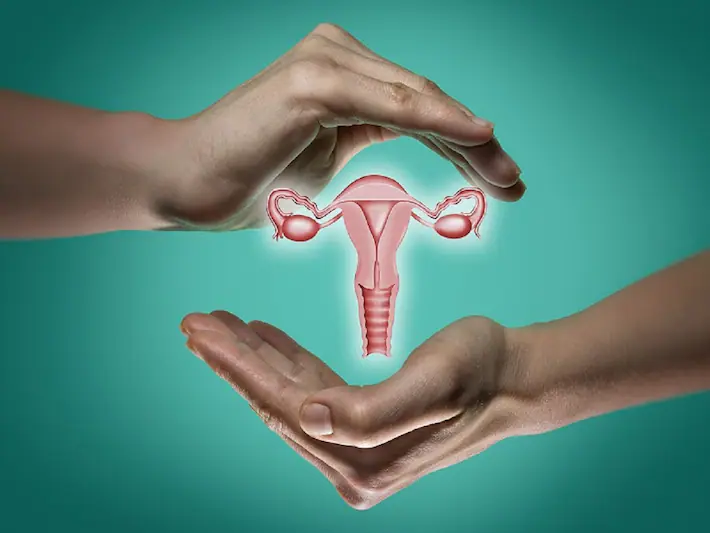Due to conflicting healthcare objectives, insufficient financial resources, and a shortage of qualified practitioners, population-based cervical cancer screening is almost non-existent in most parts of India. As a result, the majority of patients are in advanced stages of the disease, resulting in higher death and worse survival rates. In this article, we will look into the matter of how cervical cancer is a widespread disease in Indian women and its prevention.
The Indian healthcare system is advancing at a rapid pace. It has broadened their perspectives over time, allowing them to accept treatments and cures for a variety of ailments that were previously unthinkable. However, there is still work to be done in the area of women’s health. Several females are unable to access basic healthcare services, which is their fundamental right, due to a variety of factors including lack of awareness and demographic concerns.
Not only is there a lack of knowledge, but there is also a lack of priority placed on such matters. Breast and Cervical Cancers are exceedingly frequent among women, according to a survey by BioMed Central, and India accounts for 27 per cent of worldwide Cervical Cancer incidence. In 2020, the worldwide number of cases is expected to skyrocket, with India accounting for nearly 9% of all cervical cancer cases.
What is Cervical Cancer?
Cervical cancer is a kind of cancer that affects the cells of the cervix, which links the uterus to the vaginal canal. The human papillomavirus (HPV) is the virus that causes it. It is spread through sexual contact.
The HPV virus is known to be prevented from causing serious harm by the body’s defence system. The virus, on the other hand, can live for several years and can cause cancer in cervix cells in certain women. Cervical cancer accounts for a sizable portion of all cancer cases in women in India. In India, here’s everything you need to know about cervical cancer.

Cervical cancer prevention with two doses of the HPV vaccine, as well as early diagnosis of precancerous cervical tumours in the total electorate through testing and adequate intervention with a single-visit screen-and-treat approach, appear to be promising for low-middle-income countries like India.
Cervical cancer is the fourth most frequent disease in women worldwide, with 560,505 new cases and 284,923 deaths reported in 2015. The great majority of cervical cancer cases and fatalities, around 85 per cent of cases and 87 per cent of deaths, occur in less developed areas. Cervical cancer accounts for about 12% of all female malignancies and 10% of all female cancer deaths in these areas due to a lack of access to screening and treatment facilities. In less developed countries, it is the second most prevalent cancer and the third leading cause of cancer mortality among women. Cervical cancer is India’s second most frequent malignancy, with 132,314 new cases and 73,337 fatalities projected in 2015.
What are the other risks involved in cervical cancer?
Cervical cancer is caused by a combination of circumstances. Multiple sexual partners and young age at the commencement of sexual activity have been recognised as risk factors. Tobacco smoking has been identified as a risk factor for cervical cancer by the International Agency for Research on Cancer (IARC). Current smokers had a 1.5-fold higher risk of cervical squamous cell carcinoma, according to a pooled study of 23 epidemiological studies, with the risk being directly proportional to the number of cigarettes smoked each day. Tobacco smoking is thought to be responsible for 7% of cervical cancers in the United Kingdom.

Various studies have identified high parity, smoking, diet, and the use of combination hormonal oral contraceptives for more than 5 years as key environmental risk factors for cervical cancer. HIV, herpes, chlamydia, gonorrhoea, and syphilis are all sexually transmitted disorders that raise the risk of cervical cancer. Women on immunosuppressive drugs, women who eat a diet low in fruits and vegetables, women who take oral contraceptives long-term, and women who live.
Women are frequently diagnosed too late in India
According to research, nations with a low socio-demographic index (SDI*) have a greater incidence of women dying from cervical cancer. Women being diagnosed late might be due to a variety of circumstances.
- Many women in India seek treatment after their disease has progressed, making therapy and recovery difficult.
- If a patient sees a doctor promptly, therapy may not be accessible or maybe excessively expensive.
- Unlike women in industrialised economies who are screened on a regular basis to detect cervical cancer early, women in India are not screened regularly. In India, the stigma or humiliation associated with pelvic exams plays a significant role and poverty may all be at higher risk.
Cervical cancer, unfortunately, does not present any signs in its early stages. Only when cancer has progressed do symptoms begin to appear. Cervical cancer signs are sometimes misdiagnosed as symptoms of other illnesses, further complicating issues.
Cervical cancer, for example, can cause vaginal bleeding between periods or after intercourse. Women sometimes misinterpret such bleeding as irregular menstruation. In addition to frequent, painful urination and vaginal discharge, the sickness might produce other symptoms that are common in urinary tract infections.
Prevention of Cervix Cancer in Indian Women-
Cervical cancer vaccinations are now available to protect women. Vaccines for girls and women aged 9 to 26 years are available. When given to females before they become sexually active, the HPV vaccination is believed to be the most effective. Cervical cancer can potentially be detected early with routine checkups.
HPV is quite widespread, and most women infected with it never develop cervical cancer. This implies that the sickness is caused by various environmental and lifestyle variables. It is critical to practise safe sex by using condoms and limiting the number of sexual partners you have. Starting at the age of 21, Pap tests and pelvic examinations are recommended every 3-5 years. These tests can detect precancerous cervix abnormalities and thereby prevent the disease from progressing.
Controversy Surrounding Women’s Health in India’s Healthcare System-
Unfortunately, the issue is far more serious than current ignorance. Regardless of how advanced the country’s healthcare system is, it is not well-equipped to cope with women’s health issues. The crucial vaccination is not included in India’s Universal Immunisation Program (UIP). The Indian government has been requested to halt the immunisation campaign because it “diverts precious resources from more worthy health programmes to a vaccine of dubious efficacy,” according to The Indian Express.
Another cause of criticism is the exorbitant expense of immunisation. Because the HPV vaccine is not included in the official immunisation schedule, it is costly (about $2200 per) and not available to everyone. Only people from wealthy households are able to afford them because they are aware of the situation and have the resources to address it.
However, steps must be taken to ensure that rural women are aware of these issues. “Government agencies and other organisations, such as the Indian Medical Association, conduct education and awareness campaigns in schools and colleges to educate young women about menstruation hygiene. This has resulted in more individuals seeking medical help early in their illness. Many NGOs are working to give low-cost sanitary napkins to rural women, and some have even established rural enterprises where women can create and sell sanitary napkins, “Dr. Mittal adds.

For the time being, many awareness programmes are helping to eliminate stigma and ignorance. As the movement gathers traction, further steps must be made to ensure that women have access to basic healthcare. Dr. Alka Mittal wraps up her discussion by saying, “Government involvement to promote vaccine availability and lower the price of the vaccine, as well as education and awareness regarding menstrual hygiene and vaccination availability, is critical. Special awareness programmes should be implemented in both urban and rural regions to inform young girls about Cervical Cancer and its early signs.”
The substantial disease burden of a preventable uterine cervix carcinoma is completely unjustified. Concentrated preventive and control efforts in less developed countries of the world, like India, can substantially reduce the number of cases. Quitting smoking, postponing sexual activity until beyond the age of 18, limiting the number of sexual partners, and using condoms are some of the key preventative techniques for cervical cancer.
For low-middle-income nations, particularly for women living in rural and isolated locations, HPV vaccination of the eligible population and early identification and treatment of cervical precancers using a single-visit ‘screen-and-treat’ strategy look promising. The following is a summary of how cervical cancer is a widespread disease in Indian women and how it can be prevented.
Also Checkout: Watch out! These 5 dangerous eye diseases can lead to blindness
















